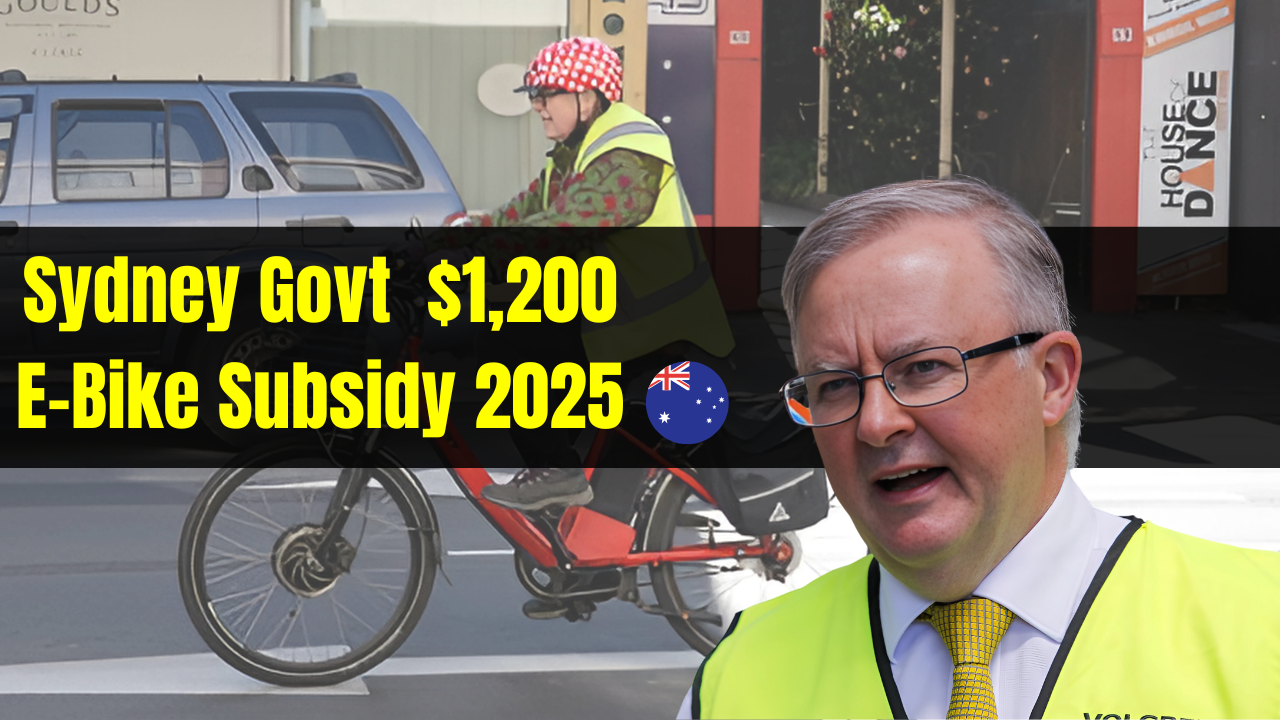Sydney’s push for greener, more efficient urban mobility has taken a significant leap forward with the introduction of fresh government E-Bike Subsidy Scheme for buyer. As congestion and environmental concerns mount, these incentives aim to make electric bikes more accessible and affordable for commuters and families across the city.
Why Are E-Bike Subsidies Important?
E-bikes blend the benefits of traditional cycling with electric assistance, making it easier to navigate Sydney’s hilly terrain and long commutes. They offer a practical solution for reducing traffic, lowering emissions, and promoting healthier lifestyles. Subsidies help offset the initial cost of e-bikes, making them a viable option for a broader segment of the population.
“E-bikes are the great leveller that can get us all mobile easily, quickly and enjoyably,” says Peter Bourke of We Ride Australia.
NSW Government’s Commitment to Sustainable Transport
The New South Wales (NSW) government has shown a strong commitment to promoting sustainable transport options. This includes not only electric vehicles but also active transport solutions like e-bikes. While previous electric vehicle rebates have ended, the focus is now shifting toward micromobility—specifically, e-bikes and e-scooters.
Recent initiatives include:
-
Council-Specific Rebates: Some Sydney councils offer direct rebates or grants for e-bike purchases, encouraging local residents to adopt this eco-friendly mode of transport.
-
Infrastructure Investment: The government is investing in active transport corridors and cycling infrastructure to support increased e-bike usage.
-
Regulatory Improvements: Ongoing work to update road rules and safety standards for e-bikes and e-scooters, ensuring a safer environment for all users.
How Do Sydney’s E-Bike Subsidies Work?
While there is no single, state-wide rebate for e-bikes in NSW as of mid-2025, several local councils in Sydney have introduced their own incentive programs. These typically offer a fixed amount (e.g., $200–$500) off the purchase price of a new e-bike, subject to eligibility criteria such as residency and the type of e-bike purchased.
Tip: Always check your local council’s website for the latest updates on available rebates and application processes.
Comparing E-Bike Subsidy Schemes Across Australia
Below is a table summarizing current and recent e-bike subsidy schemes in major Australian cities and states:
| State/Region | Rebate Amount | Eligibility Criteria | Status (as of June 2025) |
|---|---|---|---|
| NSW (Sydney) | $200–$500 (council) | Local resident, new e-bike | Ongoing (council-specific) |
| Queensland | $500 (e-bike), $200 (e-scooter) | Resident, new purchase, power limits | Ongoing, limited funds |
| Tasmania | Up to $500 (standard), $1,000 (cargo) | Resident, new purchase | Concluded (Nov 2023–2024) |
| South Australia (Holdfast Bay) | $200 (e-bike), $300 (cargo) | Resident, new purchase | Ongoing (council-specific) |
Note: NSW state-wide rebates for e-bikes are not currently active, but local councils may offer incentives.
The Benefits of E-Bike Subsidies
-
Affordability: Subsidies reduce the upfront cost, making e-bikes accessible to more people.
-
Health: E-bikes encourage physical activity, even with electric assist.
-
Environment: They contribute to lower emissions and reduced traffic congestion.
-
Economic: Every dollar invested in e-bike incentives can return up to $3 in health and transport benefits.
Advocacy groups like Bicycle NSW and We Ride Australia continue to push for more robust and consistent e-bike subsidy programs across NSW. They argue that e-bikes are a cost-effective way to achieve sustainability goals and improve urban mobility.
“Subsidising e-bikes is much cheaper than subsidising EVs and a subsidised e-bike is affordable for far more people,” notes Bicycle NSW.
The NSW government is also working on regulatory frameworks to support shared e-bike schemes and ensure rider safety, with ongoing reviews and updates to road rules.
How to Apply for an E-Bike Subsidy in Sydney
-
Check Your Local Council: Visit your council’s website to see if they offer e-bike rebates or grants.
-
Review Eligibility: Ensure you meet residency and purchase criteria.
-
Submit Application: Follow the instructions to apply for the subsidy, usually requiring proof of purchase and residency.
-
Receive Rebate: If approved, the rebate is typically paid as a reimbursement after purchase.
Frequently Asked Questions (FAQs)
Q: Are e-bike subsidies available statewide in NSW?
A: No, e-bike subsidies are currently offered by select local councils in Sydney, not statewide.
Q: How much can I save with an e-bike subsidy?
A: Rebates typically range from $200 to $500, depending on your council and the type of e-bike.
Q: What are the main benefits of switching to an e-bike?
A: E-bikes offer easier commuting, reduced environmental impact, and health benefits from increased physical activity.
Read More Centrelink Parental Leave Pay Changes Effective 1 July 2025: Check Your Eligibility Now

